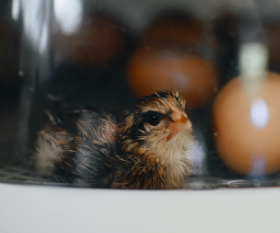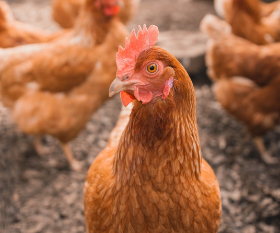A Checklist for Broiler Chicks
Thinking about raising broiler chicks? There’s a lot to know! Thankfully, Joel Salatin knows A LOT about homesteading and raising poultry. Check out his list below to gauge if you’re ready to jump into the chicken-raising life.
The following is an excerpt from Polyface Micro: Success with Livestock on a Homestead Scale by Joel Salatin. It has been adapted for the web.
Purchasing animals is as easy as a phone call or click on a website, especially chicks. Accommodating your purchase of animals and metabolizing their arrival is far different than plants.
In a pinch, you can spade up a garden plot and toss in some seeds in short order. But getting everything together to handle animals is on a different magnitudeentirely. I know commercial gardeners will cringe at my dismissive attitude toward putting in some carrot seeds, but I do both and the difference is profound. Carrots have a wide temperature range in which to be comfortable; chicks can only vary about 10 degrees. Carrots don’t wander off. Chicks have legs. I could go on, but I think you get the picture.
Every animal has a life trajectory. Before ever acquiring the animal, think through the infrastructure necessary to accommodate the animal. Let’s think about a , arguably the fastest life cycle on the homestead. From arrival in a box to bagged bird in the freezer: 8 weeks. Think back 8 weeks. Not that long ago, was it? Trust me, 8 weeks come and go in a blink.
Here is a checklist for broiler chicks before you place the order:
- Brooder–where are you going to put them when they arrive? It doesn’t have to be complicated, but you need a designated place with adequate protection from the cat and the dog (and perhaps toddlers), rats, wild predators, and weather. You need a way to keep a constant temperature without a fire hazard. What kind of bedding are you going to use? Do you have enough on hand? How about grit? Waterer, feeder? Is it big enough? Remember, you’ll need about 25 square feet per 100 birds up to 3 weeks. If you get 25 chicks, you need a bit more than 6 square feet.
-

Post brooder–where are they going to grow? For sake of this discussion, I don’t care if they’re in a suspended cage above your car in the garage or in a portable pastured shelter. What I care about is that you have it built BEFORE you order the chicks. I wish I had a nickel for every time I’ve received a frenetic call: “My chicks are overcrowding the brooder box and I have to get them out but I don’t have a place to put them yet.” Life happens. Few things are as predictable as the fact that if you don’t have your grow-out place ready before you order the chicks, some catastrophe will cramp all those days in those 3 weeks you planned to get it ready, the planned-for construction time evaporates, and suddenly you’re in a crisis and everyone is blaming everyone else. Don’t let it happen.
- Inputs–is your feed source secure? Can you store it where mice and rats won’t get in it? Do you have a spare waterer in case the one you were planning to use breaks?
- Contingencies–are you ready for a cold snap, a heatwave? Wind? Torrential rain? Weather happens.
- Handling–how are you going to move the chickens from the brooder to their grow-out facility? And then from their grow-out to slaughter? You can’t haul them in 5-gallon buckets.
- Processing–who, where, and how are you going to butcher these chickens? Remember, it’s 8 weeks away. You need a way to kill, a way to scald, a way to pick feathers, a table on which to work, potable water to keep things washed down and clean, knives, chill vat, appropriate-sized bags. This is the Waterloo more times than not. If you only remember one sentence in this whole book, remember this one: DO NOT ORDER BROILER CHICKS UNTIL YOU HAVE YOUR PROCESSING SITUATION SETTLED. That means personnel, infrastructure, and final storage.

